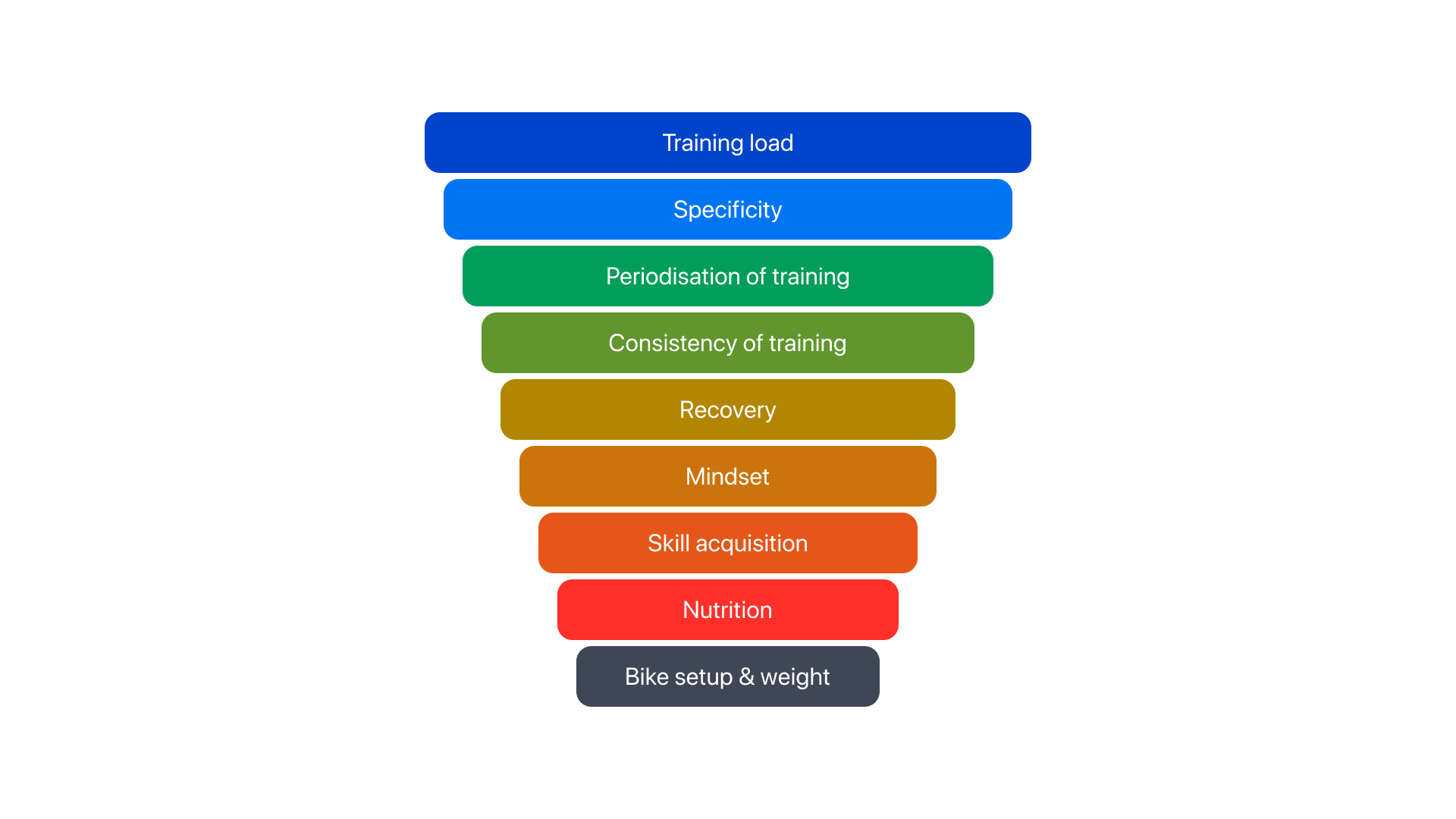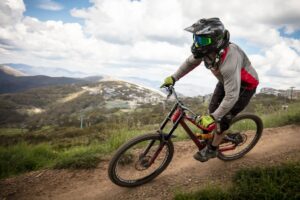How to boost your cycling performance

Technology, kit and gear are often the main topic of conversation amongst cyclists looking to improve their performance, whether that’s keeping up with your mates on a club ride or improving your category rating. Considering the air-time these things get, you’d think they were the key to going fast. However, when it comes to your performance, often, they are not as important as you might think.
We’ve been chatting to the team at Pillar (an exciting new training platform) to help us understand the real players when it comes to performance boosting and they’ve compiled the main training factors and ranked them in order of their impact on your performance.
We will be following up to delve deeper into the science behind these factors, but for now, here is their overview of what you should be prioritising.
The pyramid of performance factors
For many cyclists, just improving our effort on one or two of these high impact factors will massively impact our performance. The more sophisticated a cyclist you are, the further down the stack you have to go in order to keep the gains coming.
Why these factors matter
Here’s a fairly high-level explanation for why each of these factors is so important, and why they’re ranked as they are (for deeper context, keep your eyes peeled for the next articles in our series):
1. Training load
This is the most important factor to drive your performance, and the one most studies have shown is most highly correlated with a change in fitness. Training load is at a basic level calculated by the amount of time you spend cycling, but where time spent at higher intensity counts for more load than training at a lower intensity. You need to increase your load to make gains, but not too much (this is overtraining and prevents good performance).
2. Specificity
Put simply, you get out what you put in. If you train at high intensity, you’ll improve your top end performance more than anything else. If you train at low intensity, that’s where you’ll make most of your gains. You need to train in a way that will enable the right type of fitness gains for your goal (e.g. training for the Tour of Cambridgeshire is different to training for the Étape du Tour).
3. Periodisation of training
This means to appropriately schedule training over different time periods, in order to maximise your gains. You’ll need to do a variety of types of training to hit your goal (per our points on specificity) and increase your load in the right way to get fitter (per our points on training load). Appropriately scheduling means that sessions will have the desired effect on your fitness (different types of training may combine more effectively, and different types of training require different lengths of recovery)
Pillar can help with these three most important areas of training. It will help get your training load right, evaluate your performance, and schedule your training in order to maximise your gains.
Getting these factors right can be tricky; balancing them all at the same time is another story. That’s why we built Pillar – to take the burden out of training, and leave the only work for you to do on the bike.
4. Consistency
When you stop stimulating the body via training, it either stops progressing or can regress. Staying on the bike is the only way to maintain fitness and keep the gains coming! Going one further and spreading your training throughout the week will help even more.
5. Recovery
When you train, you stimulate your body to adapt. Once it’s adapted, you are fitter and can achieve more. However, this adaptation only happens if you take the time out of training to recover. If you keep stimulating the body without allowing it to recover (overtraining), you won’t improve and you’ll likely get injured.
6. Mindset
Your mental capacity to stay on the bike, and to be resilient during periods of heavier and/or harder training is critical, because it allows this training to take place
7. Skill acquisition
Cycling has a moderate to high demand on your motor and control skills. Skills are only acquired when you practice regularly – riding with more experienced cyclists or attending skills sessions can really help here.
8. Nutrition
Nutrition is important for two reasons:
Fuels your training so that you can cycle for the required intensity and for the right duration (enabling enough of the right stimulus to drive the right adaptations in your body)
Enables your recovery – what you eat fuels the physiological adaptations that are the increases in your fitness
9. Bike setup, position, and bike weight
Often talked about and definitely impactful, but pale in comparison to the impact of the factors above. We’ve looked at bike geometry and the importance of bike fits in more detail here.
Over the coming weeks, we’ll be diving deep into training and exploring how you can boost your performance with key scientific principles and actions you can take. Stay tuned!
Pillar aims to enable amateur athletes to achieve their best and hit their goals, on their own terms.
Download the app via Google or Apple and see how we can help take you on a new cycling journey.






